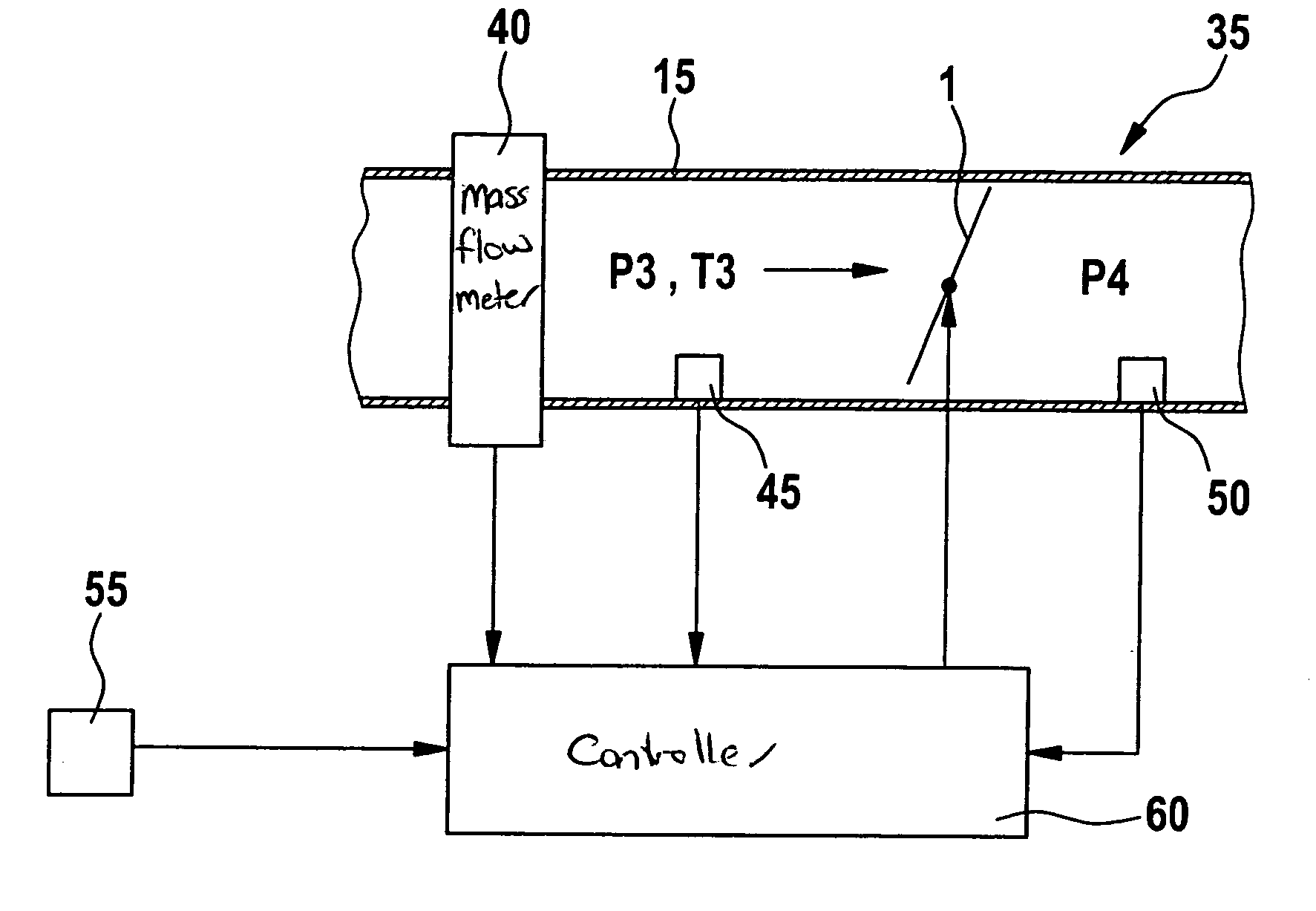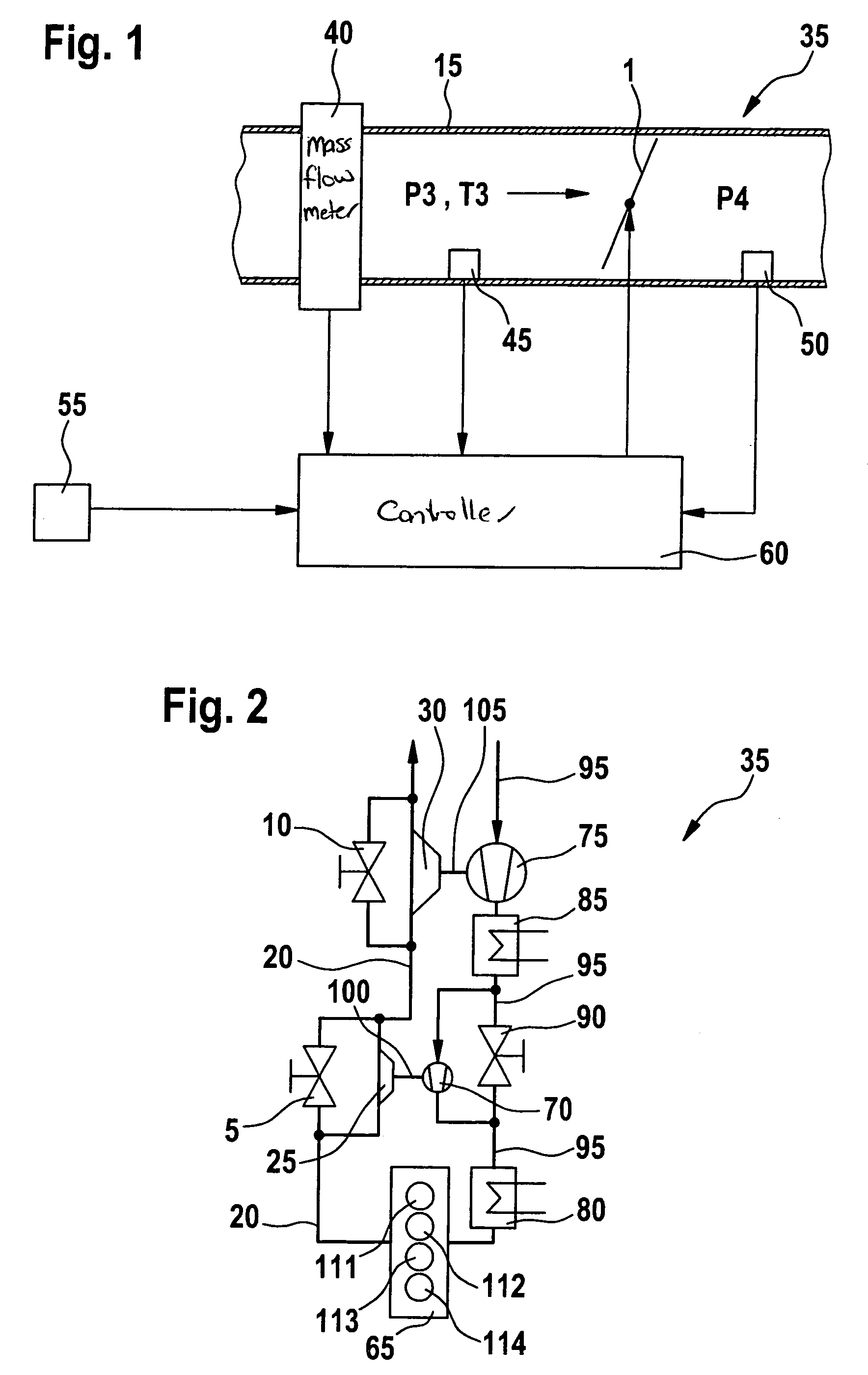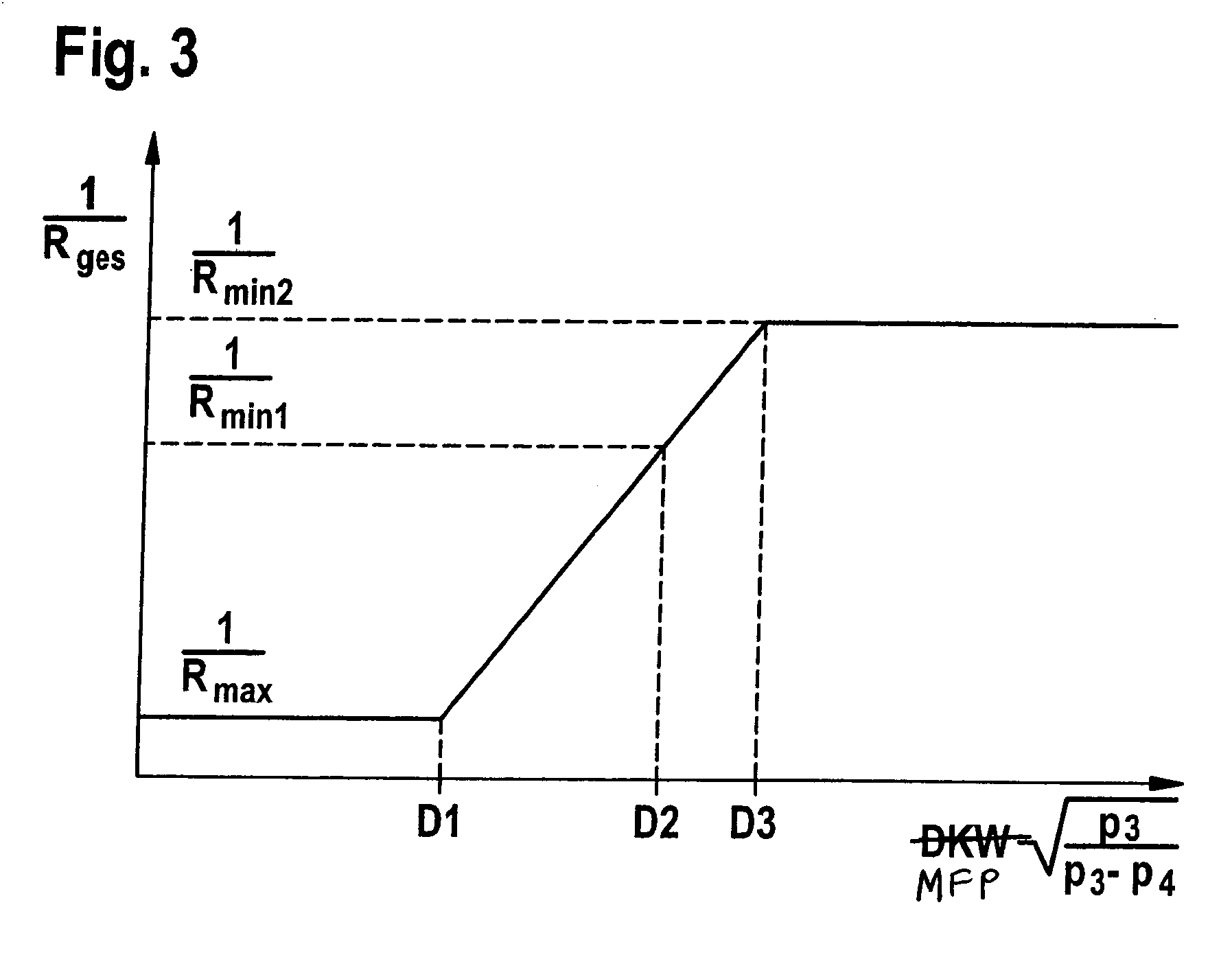Method for controlling at least one actuator in a mass flow duct
a technology of mass flow duct and actuator, which is applied in the direction of electrical control, process and machine control, instruments, etc., can solve the problems of difficult dynamic operation, difficult to achieve optimal resolution, and complicated regulation on the basis of physical models, so as to improve the response time of an exhaust gas turbocharger for setting a desired boost pressure or a desired exhaust counterpressure, the effect of reducing the response tim
- Summary
- Abstract
- Description
- Claims
- Application Information
AI Technical Summary
Benefits of technology
Problems solved by technology
Method used
Image
Examples
Embodiment Construction
[0019]In FIG. 1, reference numeral 15 designates a mass flow duct. Mass flow duct 15 may be a component of an internal combustion engine 35, for example. Internal combustion engine 35 may drive a vehicle, for example. An actuator 1 is situated in mass flow duct 15. Actuator 1 may be designed as a throttle valve, for example. In this case, mass flow duct 15 represents an air supply of internal combustion engine 35, via which fresh air may be supplied to one or more cylinders 111, 112, 113, 114 of internal combustion engine 35. Actuator 1 may also be an exhaust recirculation valve. In this case, mass flow duct 15 represents an exhaust recirculation channel of internal combustion engine 35, via which exhaust gas may be recirculated from an exhaust system branch 20 of internal combustion engine 35 into the air supply of internal combustion engine 35. Actuator 1 may also be implemented as a bypass valve in a bypass of internal combustion engine 35. Such a bypass may bypass the throttle v...
PUM
 Login to View More
Login to View More Abstract
Description
Claims
Application Information
 Login to View More
Login to View More - R&D
- Intellectual Property
- Life Sciences
- Materials
- Tech Scout
- Unparalleled Data Quality
- Higher Quality Content
- 60% Fewer Hallucinations
Browse by: Latest US Patents, China's latest patents, Technical Efficacy Thesaurus, Application Domain, Technology Topic, Popular Technical Reports.
© 2025 PatSnap. All rights reserved.Legal|Privacy policy|Modern Slavery Act Transparency Statement|Sitemap|About US| Contact US: help@patsnap.com



